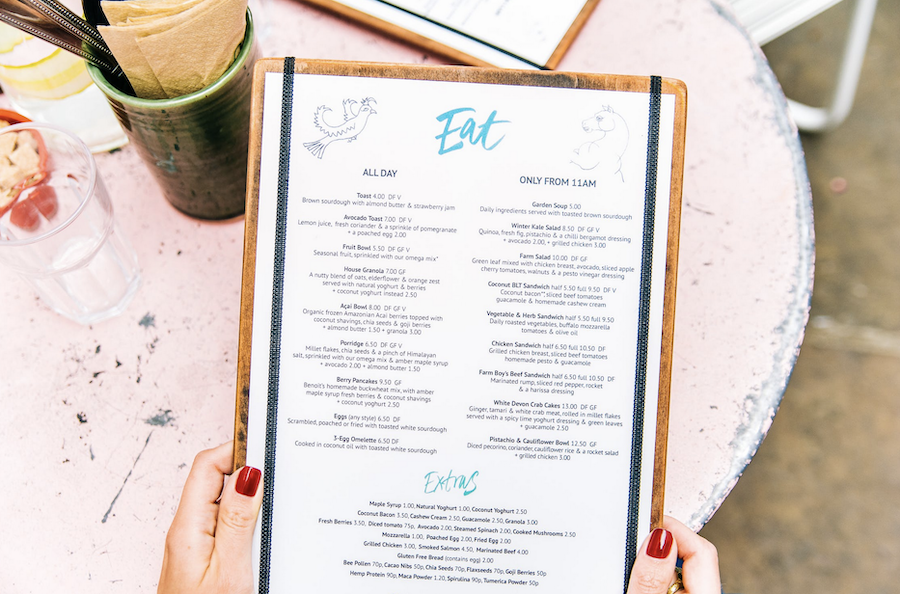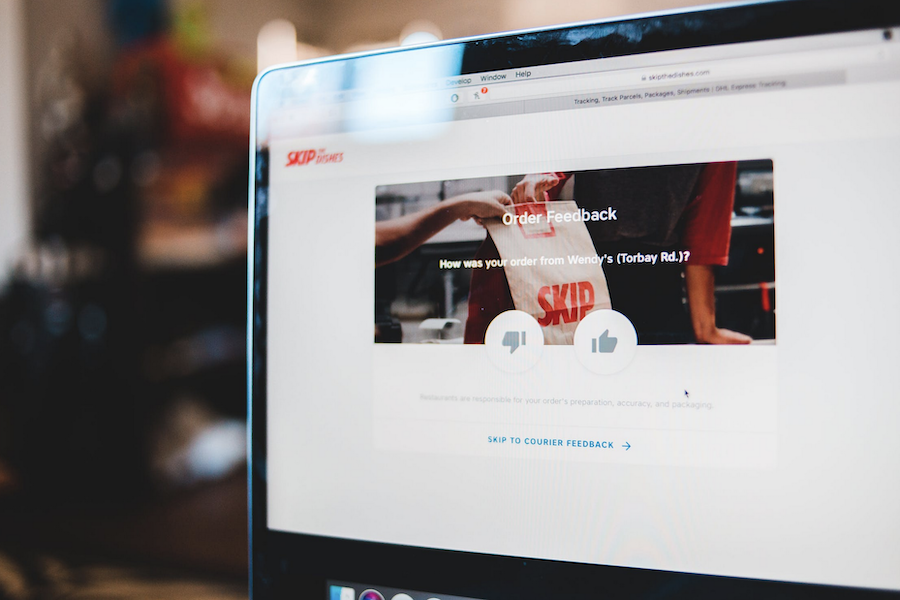Restaurant Goals: 9 Goals Every Restaurant Should Have
Having restaurant goals is incredibly important if a restaurant business is to be successful.
They help keep focus on what’s important and remove the chance of wasted resources.
Running a restaurant business is a blend of challenges and fun – you have a lot of scope to incorporate interesting elements in your business.
However, this comes with different limitations. The hospitality business faces many challenges. Be it limited budget or cut-throat competition, the issues are endless.
This shifts the focus to resolving these challenges and day-to-day issues, and the actual purpose and goals of the business take the backseat.
This is why, whenever you start a restaurant business, you need to be very clear of the goals – both long and short-term- so that you can keep track of these restaurant goals even as your business progresses.
A steady, rising revenue, customer satisfaction, and happy employees are the primary objectives of every business.
To achieve these objectives, you need clear goals. And these goals are exactly what we will be talking about today.
Here are 9 restaurant goals every restaurant should have:
1. Create a brand
2. Offer the best menu
3. Go eco-friendly
4. Top quality service
5. Add the fun element
6. Advertise your restaurant
7. Ask for feedback from customers and employees
8. Manage inventory efficiently
9. Monitor your growth
1. Create a brand
This is the very identity of your restaurant, and it is this name by which you will be known among your customers.
So, choose carefully.
You must be very particular when you choose the name of the restaurant – it should vibe with the whole theme of your restaurant and should be something unique and catchy.
Along with the name, also choose the color scheme and fonts well.
These are among the first aspects that any customer would notice before they even step into your restaurant.
In the later stages, as your business progresses, your food will talk for itself. But until then you have to create a name for yourself with the help of these advertising techniques.
Also, ensure you have a nice ambiance in your restaurant – one where people would love to hang out.
Make it as aesthetically pleasing and Instagram-worthy as you can.
You don’t need to spend a lot to make your restaurant stand apart – it’s the simple things that can make a huge difference.
All you have to do is think out of the box and get going!
So your first goal of the nine restaurant goals is to focus on the brand of the restaurant and get everything aligned so the name can strengthen over time.
2. Offer the best menu
Good food is naturally what people head to a restaurant for!
You need to craft the menu keeping in mind a customer base that comes from different backgrounds with diverse preferences.
So, if you offer Thai food in your restaurant, ensure you have plenty of Thai classics on the menu.
Along with the staple Thai dishes, you can also go one step ahead and introduce fusion dishes to the customers who love experimenting with different foods.
Give them something to tantalize their taste buds – some unique food with amazing taste and presentation.
You can also ensure you feature some basic food on your menu for those who love simple, delicious food.
You should also consider different pricing ranges – with only expensive food, you will end up catering only to one part of your potential customer base.
Reasonably priced food will fetch you a lot more customers, too!
So the second of the nine restaurant goals is to focus on the menu, make sure the food experience is competitive and memorable.
3. Go eco-friendly
Now this works in two ways – you contribute to the environment in your own little ways, while saving a lot of money.
This two-way deal cannot get any better, which is why you need to consider incorporating eco-friendly practices in your restaurant.
So, what can you do?
Have a zero-waste policy in your restaurant.
Encourage customers to follow it. Bring in more vegetarian dishes on the menu. Educate your chefs about how they can cook delicious food with minimal to no wastage.
Sourcing food from local farmers and suppliers is another way – you will be assured of good quality, fresh cooking supplies while cutting down on transport costs.
To have such policies in place, you will have to research ways you can blend in environment-friendly policies with the existing culture of your restaurant.
But once you do incorporate them in, you’ll notice the positive difference you are making.
And believe us, people out there are slowly, steadily, and increasingly getting conscious about the environment.
They love visiting restaurants that follow eco-friendly practices!
The third goal is to think about your social impact on the world and how real-life issues are affecting your customers purchasing decisions.
4. Top quality service
Restaurants are a lot more than places that serve food – it is also about the experience, courtesy and feeling valued.
The moment a customer enters your restaurant, they expect good quality service – and that is what you need to offer to them. And this brings the importance of a good team into the picture.
Hiring good staff is important.
The staff interacts with the customers more than you would, which is why you need to have a great team in place.
A polite courteous and empathetic staff can help elevate the experience of your patrons.
Serving meals in a reasonable amount of time is a great way to leave a lasting first impression on your customers.
Encourage your staff to go beyond and help the customers be comfortable in your restaurant.
Good quality service leaves a lasting mark on your customer base, making them want to visit you again.
Your restaurant isn’t going to be successful if you aren’t able to convert new customers into regular patrons.
So, you must have all measures in place to ensure you have happy, satisfied customers.
The fourth goal is to therefore make sure your restaurant has A class customer service.
5. Add the fun element
Every now and then, you have to come up with different ideas to ensure customers keep trickling into your restaurant.
You can organize events for different age groups – for example, a magic show for kids, a karaoke night for families, or even hire the local music band for a mini-concert at your restaurant.
These little things enhance the ambience of your restaurant, making it lively enough for people to look forward to visiting again.
For sports enthusiasts, you can screen the ongoing sports tournaments and offer discounts on food and drinks.
For the older people who love their quiet time, offer brunch discounts.
For the kids, you can have a separate play area (if space permits) so that they can have their share of fun as the parents enjoy their food.
You can also consider revamping the interiors of your restaurant and adding some more visually appealing elements.
If you have a casual theme, you can have open-air seating with vibrant colorful chairs and cushions.
The possibilities are endless – all you need to do is think about how you can add a dash of fun- but without spending too much.
The fifth goal is to ask yourself whether different people are actually having fun in your restaurant. If they’re not then the experience is probably lacking.
Find the fun element that suits your restaurant and focus on it.
6. Advertise your restaurant
There are thousands of other restaurants out there; for people to choose yours, you need to let them know what’s different in your restaurant.
In the initial stages, you may not have enough customers as people are yet to know that you exist.
However, you could start marketing even before your restaurant opens. This would generate enough hype around your place, and people would start coming in since day one.
If you have an already established restaurant, it’s still not too late.
You can begin afresh with a brand-new marketing campaign that would put you in a top spot in the market.
Make sure to put out the best of your restaurant on your social media pages – the pictures, captions need to be perfect.
If you can’t handle the social media part, you can even consider outsourcing it to an agency.
Many businesses have reaped the benefits of excellent digital marketing, and now it’s time for you to step up, too.
Start posting frequently on your social media pages to ensure enough attention from the target customer base.
You can also post appealing discounts and deals so that people are incentivized to come in.
You need to think of different ways and means to boost your sales, and in turn, your revenue. And marketing is one cost-effective and result-oriented measure you can take.
Therefore, the sixth goal is to make sure you have an effective marketing strategy in place that’s consistent and results in conversions.
7. Ask for feedback from customers and employees
Feedback is a great way to know what exactly the customers feel about your restaurant.
It would also help you and your employees to work on certain drawbacks if they are pointed out.
If you wish to retain customers, let them know that their feedback is valued and that you are willing to work on any issues that they come across.
Incentives work wonders to get feedback – so ensure you offer a discount coupon or a free drink the next time they come in in return for the feedback.
Just as the feedback of your patrons is important, don’t forget the other stakeholders of your restaurant – your employees.
This group actually works hard to ensure a smooth, seamless flow to all your restaurant activities, which is why they need to feel valued too.
Checking on your employees every now and then is important. Get their feedback, ask them about the good part of working with you, and find out what areas they would like you to improve on.
Take their suggestions into consideration and implement them as and when you can.
Both customers and employees might have a perspective that you wouldn’t.
They view your business differently, while you look at it from a profit point of view.
Most of their feedback- if not all- would definitely be worth something you can act upon.
The seventh restaurant goal is to not think that your restaurant is already perfect. Have a learning attitude that is open to feedback so your restaurant can continuously improve.
8. Manage inventory efficiently
You may not realize it, but bad inventory management can lead to a lot of expenses.
You lose out on raw material and then incur costs to replenish it over again.
Food waste and shrinkage are two factors that lead to inventory-related overhead costs and avoiding them at all costs is the only way out.
Constantly monitoring your inventory stock levels will help you reduce any sort of wastage and avoid theft.
A great way to monitor your inventory levels without actually going in there physically is to link your sales to your inventory.
The moment a sale is registered in the system, it would automatically show the used-up inventory and update your inventory levels accordingly.
Training staff to keep an eye on the inventory and stick to the first-in-first-out policy is also essential. Your staff will be the ones handling the inventory most of the time, which is why they need to be educated about managing it properly.
Implementing better storage and preservation mechanisms also help cut down wastage per month or week.
Managing inventory is not about just one factor- all of these need to be implemented cumulatively.
The eighth goal is to manage your costs efficiently and remove any wastage. This will help streamline the business and keep cash flow positive.
9. Monitor your growth
Now that you have implemented some changes in your restaurant, it is time to monitor the results.
The results may not be visible immediately, but over time, you will notice a spike in your revenue.
For this, you would have to have proper mechanisms in place.
This involves a good POS software that would help you understand the quantitative growth of your business.
POS systems can generate reports on a periodic basis that can be easily analyzed and understood. As a business owner, you need to be well-versed with these numbers- only then can you work on improving them.
Likewise, your inventory management software is an important aspect, too.
This would help you compare the wastage and expenditure of the previous months and present months.
It would also help you gauge if the policies you have implemented in your restaurant are working or not.
If yes, great! If not, you’d have to revisit your policies and change them, if required.
The ninth and final goal is to promise that you’ll measure and track every activity you do within your restaurant.
Without data, you’ll be blind and won’t know what’s working and what’s not.
The most successful restaurants monitor everything they do and continuous improve month on month.
Summing up
Understanding the requirements of your business is very important as you begin setting restaurant goals.
And yes, once you set the goals, you also have to monitor your progress – in each segment and the business as a whole, to check if it’s all working out well.
Feedback from stakeholders is an important aspect, so don’t miss out on taking it.
And yes, good luck with implementing these goals for your restaurant business!












